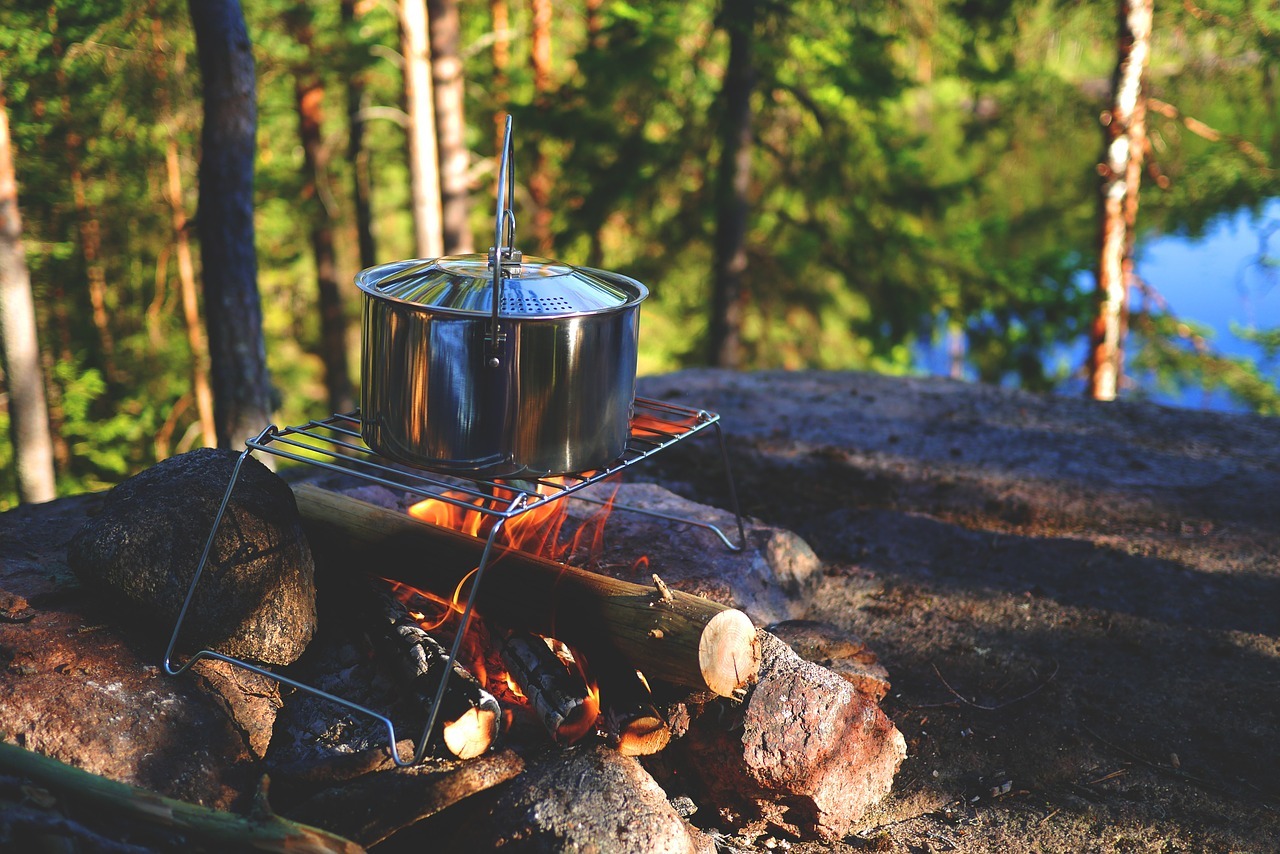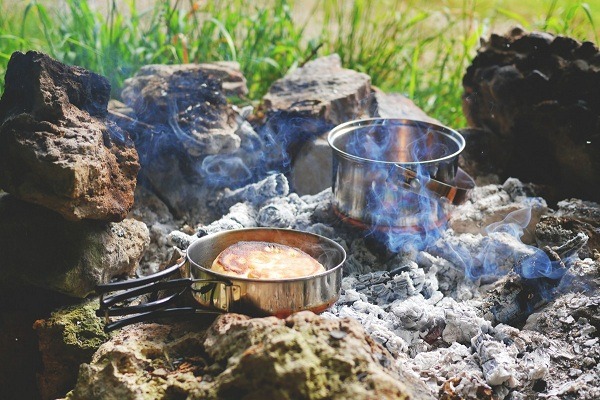There’s a common misconception that the wilderness cooking is limited to hot dogs, hamburgers, canned food, eggs, and ramen noodles. There’s no one right way to cook in the wilderness, but to enjoy your trip, there’s no reason you must sacrifice food. Knowing how to cook in the wilderness without a lot of conveniences you typically find in a kitchen is a skill worth honing. There are a lot of ways to make a great meal, even with little that you have.
If you want to have an awesome camping trip while enjoying real and excellent food, here are some tips to follow:
Plan menus beforehand
Since you’ll be out in the wild, it pays to plan your meals before you embark on the trip. Depending on your route and goals in the wilderness, plan a number of quick and low-effort meals, plus more elaborate dishes during the daytime. Think about protein, because being hungry in the wilderness sucks. Make a meal order considering weight, freshness, and variety. Creating a meal order will help make sure that you have something to eat, and no time is wasted deliberating “What should we eat?” during mealtimes. Consume the fresh ingredients first so they won’t go stale.
Make flexible meals
Going to the wild doesn’t mean you have to eat the same old food every day. Yes, you can accept the fact that you won’t have everything you need when you’re in the forest, but you can use your imagination and be creative when it comes to cooking. For example, you can use potatoes and onions to make soup, kebabs, or you can make French fries and onion rings with it. Tortillas can be used to make wraps, fried as chips, or create a peanut butter sandwich.
Know that your favorite food can translate to anything in the wilderness. With your recipes, replace “simmer” with “boil” or “pre-heat oven” with “place under hot fire.”
Prepare your camp kitchen before the trip
As mentioned earlier, being prepared is what makes a great wilderness cooking experience. There are so many ways to be ready for a camping or a backpacking trip, and having an organized wilderness kitchen will help to make cooking fun and stress-free.
Having a frying pan is vital for every camping trip. You can cook on a portable camping stove. Dutch ovens are also efficient. Also bring a lightweight cutting board and a handy knife, and a spice kit and container with a tightly-fitting lid. If you have no idea about the equipment you need to bring for your camp, check out the valuable items here.
Here are some simple ways to prepare for cooking on the trip:
- Pack extra propane for the stove.
- Try out kitchen equipment in advance to make sure everything works.
- Make dressing, sauces, and blends in advance.
- Chop vegetables ahead of time.
- Bring already dehydrated fruits and vegetables as snacks.
Designate cooking roles with fellow campers
Build a routine and make space in your travel schedule for cooking adventures. Cooking in the wilderness won’t take less than 30 minutes, just like when you cook in your own home. Remember that cooking in the wild takes some effort, so make sure an ample amount of time is included in your schedule to prepare meals.
Now, if you’re traveling with a group delegate roles. Make sure someone is in charge of gathering firewood and making the fire, designate someone to be the cook or a baker, then assign someone else to clean up and do the camping dishes. Definitely, designate a bartender to make drinks for everyone after doing the hard work. You can pre-chop your veggies ahead of time, but if you want to chop them in your camp, then assign someone to be the chopper.
Go fishing and foraging
Fresh is always good, and cooking in the wild with fresh food makes the experience even better. If you want to add a fresh flavor to your camping menu, go fishing, and cook what you’ve caught! Fishing in the wild is fun and refreshing. There’s something so rewarding about grilling the fish you caught in the fire you’ve built. Plus, it’s free! It may be slower, but it’s a hundred times more fun than cooking a fish you bought on the market at home.
When you’re on the trail, you can also forage fresh fruits. Wild nuts and berries grow all over the wilderness, and they are the ultimate delicious, healthy, and free snack. They can also be thrown into a side dish or to any meal you are making.
Build a fire
Now here’s the important part. Make sure you know how to build a fire. But before you make fire, make sure you are allowed to at the site you are visiting. Check the restrictions so that you won’t be violating any rules that may cause them to kick you out. Many camp stoves come with only one setting, while the amount of heat coming from the fire varies. Think about bringing a portable fire grate, a pair of leather gloves, plus a pair of pot grips or pliers to make cooking easier.
Allocate lots of time to make camp dinner
Cooking dinner in the camp is way different than cooking dinner in your kitchen at home. Allow lots of time before it gets dark to prepare your dinner. The first night you set camp is most probably the night when you have to set up the camp stove and kitchen, and sometimes, it can be time-consuming. Make sure that you have your tools, ingredients, and spices are prepared before it gets dark. Start making dinner well before sunset because it’s hard to do it at night in a dark campsite.
Be resourceful
Cooking in a campsite means being away from the conveniences you have in your kitchen, so you have to be resourceful. Here are some ways to on how to make do of the things you have in camp:
- Use aluminum foil.
Cooking veggies and meats in aluminum foil is a classic hack for outdoor cooking when you don’t want to deal with messy pans. For your camping trips, make sure you bring a small roll of aluminum foil, and you can do many things with it.
- Cook meat on a stick.
Cooking on a stick is another classic way to cook without using pots. A small game can be skinned, gutted, cleaned, and then roasted on a stick over a fire. Fish cooks well on a stick too. You have to be careful, though, and make sure you turn it evenly. Also, avoid using woods that may leave an unpleasant taste, like resinous woods.
- Cook on a rock.
This will take so much time, but it’s a tried and tested method to cook in the wilderness. Rocks placed in the center of the fire or near a fire can be used as a surface to cook on. You have to make sure rock is clean and let it burn off a bit, and then you can cook food on its surface.
- Cook using bamboo.
A piece of bamboo with a large diameter can be used to boil water and even cook soups and rice. Just make sure that you cut the bamboo to keep the sealed segments that will hold food and water.
- Wrap meats in leaves.
Fish, game, thinly cut meats, and other fast-cooking cuts of meat can be well done when wrapped in leaves and allowed to cook.
- Cook on a spit.
It takes time to set poles and carve a few sticks, but you can create a primitive spit where you can roast your meats on. The basic concept is to have two sticks with a fork shape on each end, and have a long pole to lay between them. Remember to be careful not to overload the spit. You also don’t have to turn the meat constantly – you want to keep it on one side for a period of time before turning it, so plan it accordingly.
Practice now
The best way to be prepared and be able to cook successfully in the wilderness is to practice it now. Do it during good times, rather than when you’re already there in the wilderness. If you are camping with your family and friends, then host a prepper dinner party so that all of you can learn to cook in the wilderness and know what to do beforehand. It can be a fun bonding opportunity to practice altogether.

